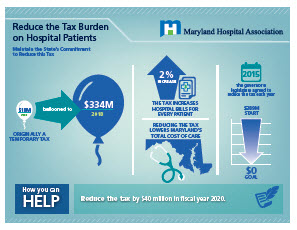We're Below To Talk About Surgical Solutions For Hernia Types

Material By-Gentry Sylvest
* Inguinal hernia: A protrusion of cells through a damaged location in the abdominal wall surface, usually on one side of the groin.
* Hiatal rupture: A projection of the tummy via the diaphragm and right into the upper body dental caries.
* Umbilical rupture: A lump near the belly switch that occurs when a weakened area in the abdominal wall permits fat or various other cells to press with.
* Ventral hernia: A lump that happens when a weakened area in the abdominal wall surface enables fat or various other tissue to press through, frequently near a previous surgical incision.
* Incisional rupture: A bulge that happens when a weakened location in the stomach wall enables fat or other cells to press through, frequently near a previous medical cut.
It is important to note that not all hernias call for surgery, yet these types do. If you think you have a hernia, it is essential to seek advice from a healthcare specialist for proper medical diagnosis and treatment.
So, you have actually been experiencing some pain recently, and after a detailed exam, your physician has actually identified that you have a rupture. Now, before you begin panicking, it is essential to comprehend that not all ruptures require medical treatment.
However, there are particular types that do, and that's what we're here to go over. From inguinal hernias to umbilical ruptures and even hiatal ruptures, each one offers its very own special difficulties and considerations.
Yet let's not prosper of ourselves just yet. We'll dive into the specifics soon enough.
Inguinal Hernias
If you're experiencing discomfort and discomfort in your groin area, you might have an inguinal rupture that calls for surgical intervention. An inguinal hernia happens when a part of the intestinal tract or cellulite pushes through a vulnerable point in the inguinal canal, which is located in the reduced abdominal area.
This type of rupture is more typical in men than females and can be caused by variables such as hefty training, stressing during bowel movements, or persistent coughing. Signs and symptoms of an inguinal rupture include a bulge in the groin area, pain or discomfort when coughing or raising, and a feeling of stress or weak point in the groin.
If left untreated, an inguinal hernia can result in issues such as bowel blockage or strangulation, which is why medical intervention is essential to repair the hernia and stop more complications.
Umbilical Ruptures
Do you understand what an umbilical hernia is and how it can be treated operatively?
An umbilical rupture takes place when a part of the intestine or abdominal cells protrudes via a vulnerable point in the stomach wall near the tummy button.
If you have an umbilical rupture that calls for medical treatment, here are 3 therapy options to consider:
- Rupture fixing surgical treatment: This is one of the most usual therapy for umbilical hernias. During the treatment, the specialist will make a cut near the hernia and press the protruding cells back into place. They'll then reinforce the stomach wall surface utilizing stitches or a mesh spot.
- Laparoscopic surgical procedure: In many cases, a minimally invasive strategy called laparoscopic surgery might be made use of. https://k12.instructure.com/eportfolios/222146/Home/Comprehending_The_Prices_Of_Rupture_Surgery_Budgeting_Tips includes making small lacerations and utilizing a cam and specialized devices to repair the rupture.
- Open up surgery: In more complex cases, open surgery might be required. This entails making a bigger incision to access and fix the hernia.
Hiatal Hernias
A hiatal hernia occurs when part of the tummy protrudes via the diaphragm into the chest tooth cavity. This type of hernia is reasonably typical and often needs medical intervention.
Hiatal hernias can be categorized into two major types: gliding and paraesophageal hernias. Gliding ruptures are one of the most usual and occur when the reduced part of the esophagus and the top of the tummy slide up right into the chest with the respite, a small opening in the diaphragm.
On the other hand, paraesophageal ruptures are less common but a lot more extreme. In this kind, a portion of the stomach pushes via the respite along with the esophagus, causing possible problems like stomach volvulus or strangulation.
Surgical fixing is usually necessary to deal with hiatal hernias and relieve signs and symptoms such as heartburn, breast discomfort, and difficulty ingesting.
Verdict
So there you have it, the various types of ruptures that call for surgical treatment.
One example of a rupture case that called for surgical procedure is John, a 45-year-old man who suffered from an inguinal hernia. Despite his preliminary discomfort and worry, John went with medical intervention.
The procedure succeeded, and he experienced a full recovery, permitting him to go back to his regular tasks without any more complications.
Remember, it is necessary to consult with a health care specialist if you believe you might have a rupture that requires medical therapy.

